How to Connect Amazon DynamoDB as Data Destination
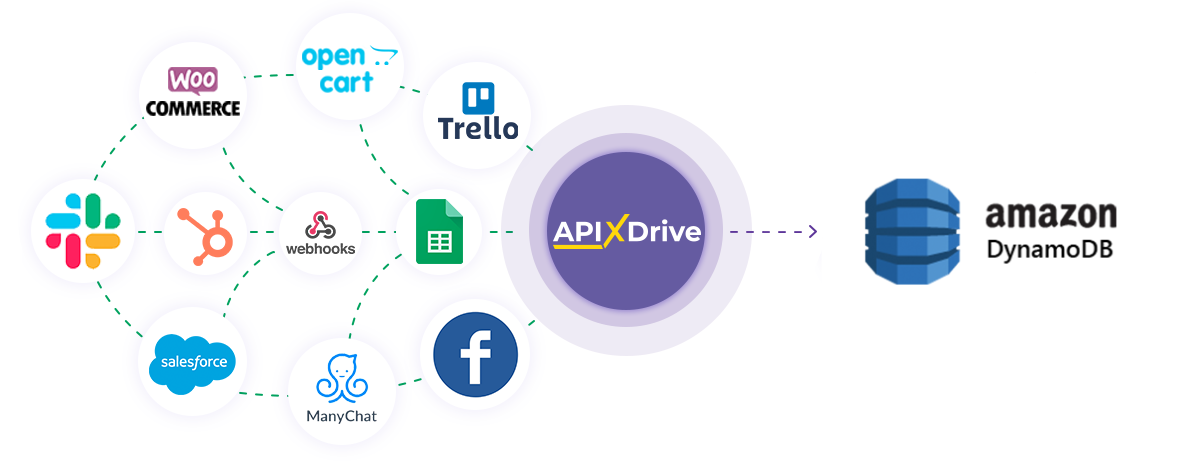
The integration will allow you to add or update rows in Amazon DynamoDB based on data from other systems. For example, if an order in CRM moved to another stage of the funnel, or when a new order appeared on your site, a new line will be added. This will allow you to efficiently automate your workflows and save a lot of time by eliminating the need to manually add each row to the table.
Let's go through the entire Amazon DynamoDB setup step together!
Navigation:
1. What will the integration with Amazon DynamoDB do?
2. How to connect Amazon DynamoDB account to ApiX-Drive?
3. How to set up data transfer to Amazon DynamoDB in the selected action?
4. An example of the data that will be sent to your Amazon DynamoDB.
5. Auto-update and communication interval.
Answers to FAQ:
1. How do I create a database on an Amazon DynamoDB system?
After configuring Data Source, click "Start Configuring Data Destination".
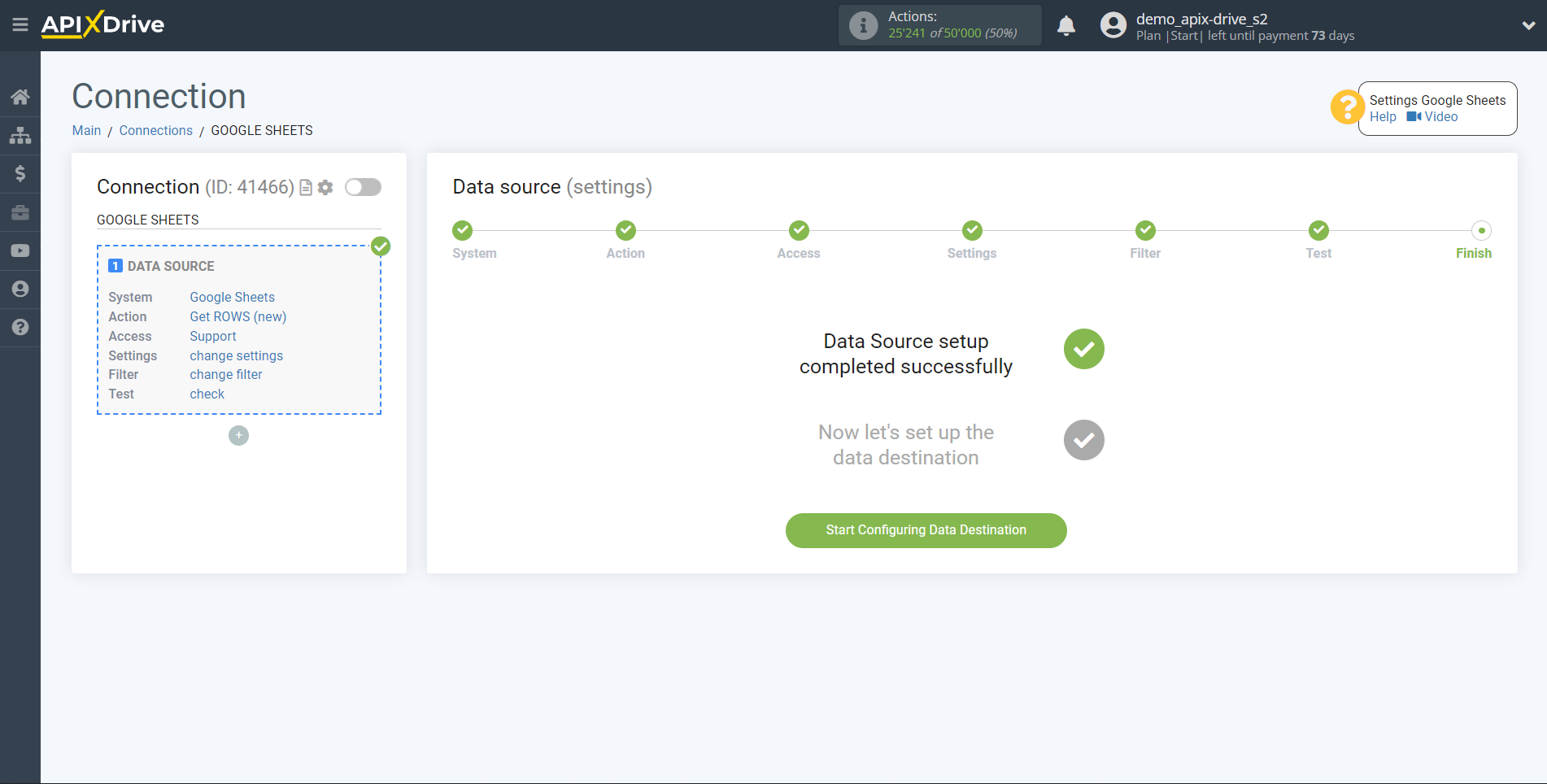
Select the system as Data Destination. In this case, you must specify Amazon DynamoDB.

Next, you need to specify an action, for example, "Add ROW".

The next step is to select the Amazon DynamoDB account to which the data will be sent.
If there are no logins connected to the ApiX-Drive system, click "Connect account".
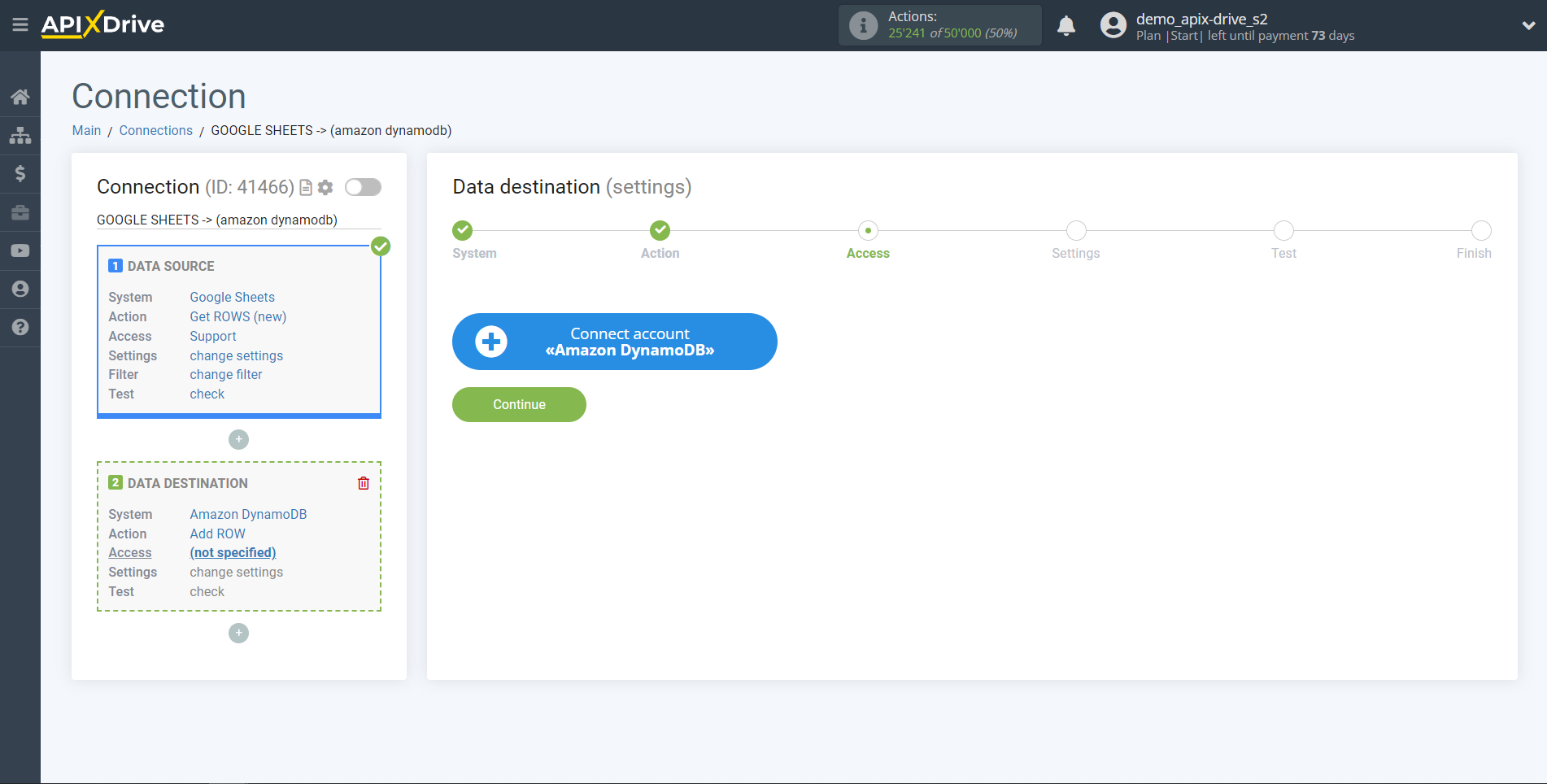
In the window that opens, specify the region in which your Amazon DynamoDB system is configured, as well as "Access key ID" and "Secret access key".

To specify your Region, go to your Amazon DynamoDB account. If you don't already have your Region selected, select it from the list.
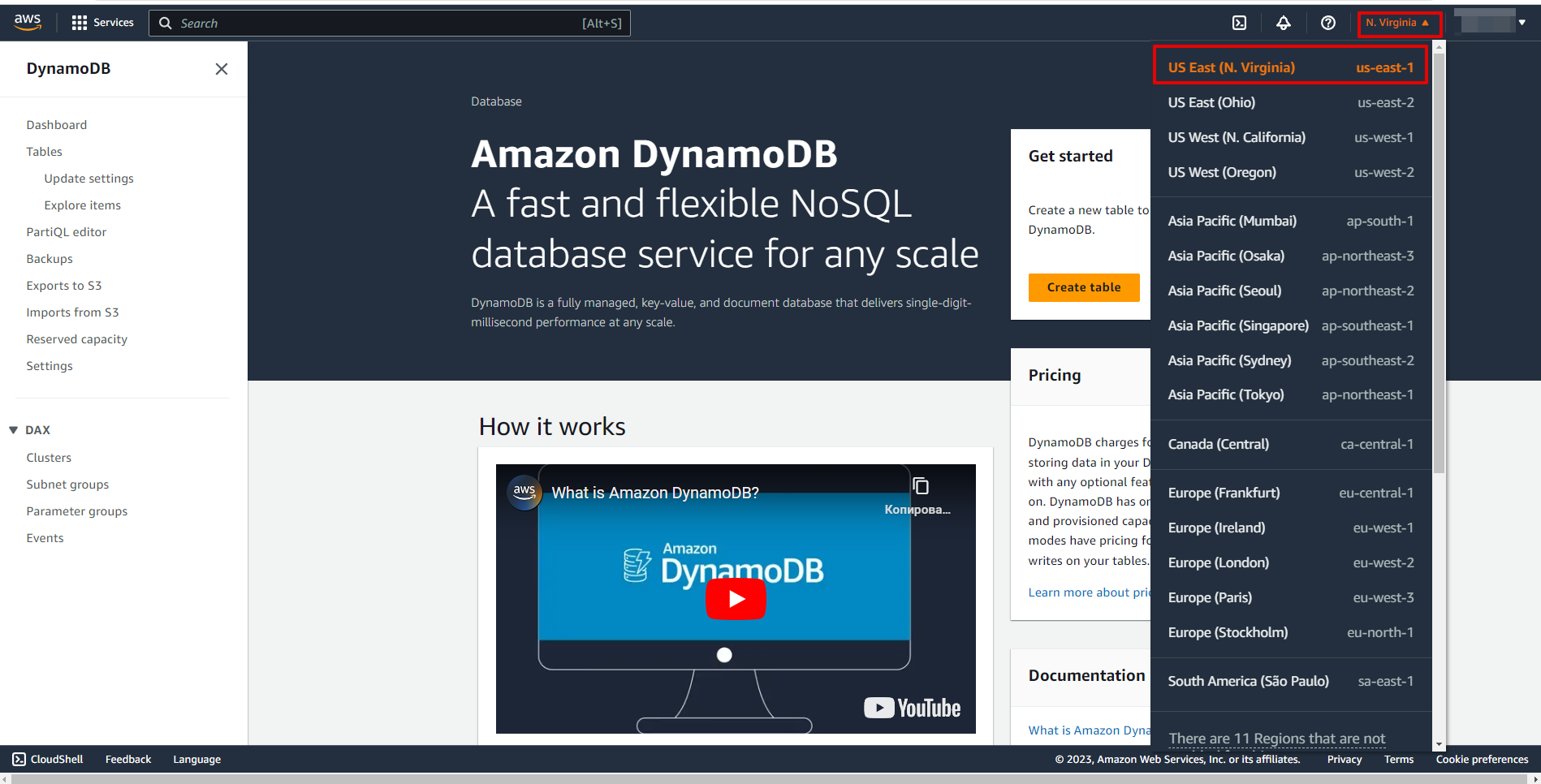
In order to create a user, find the IAM system in the search, then go to the "Users" tab and click "Add users".
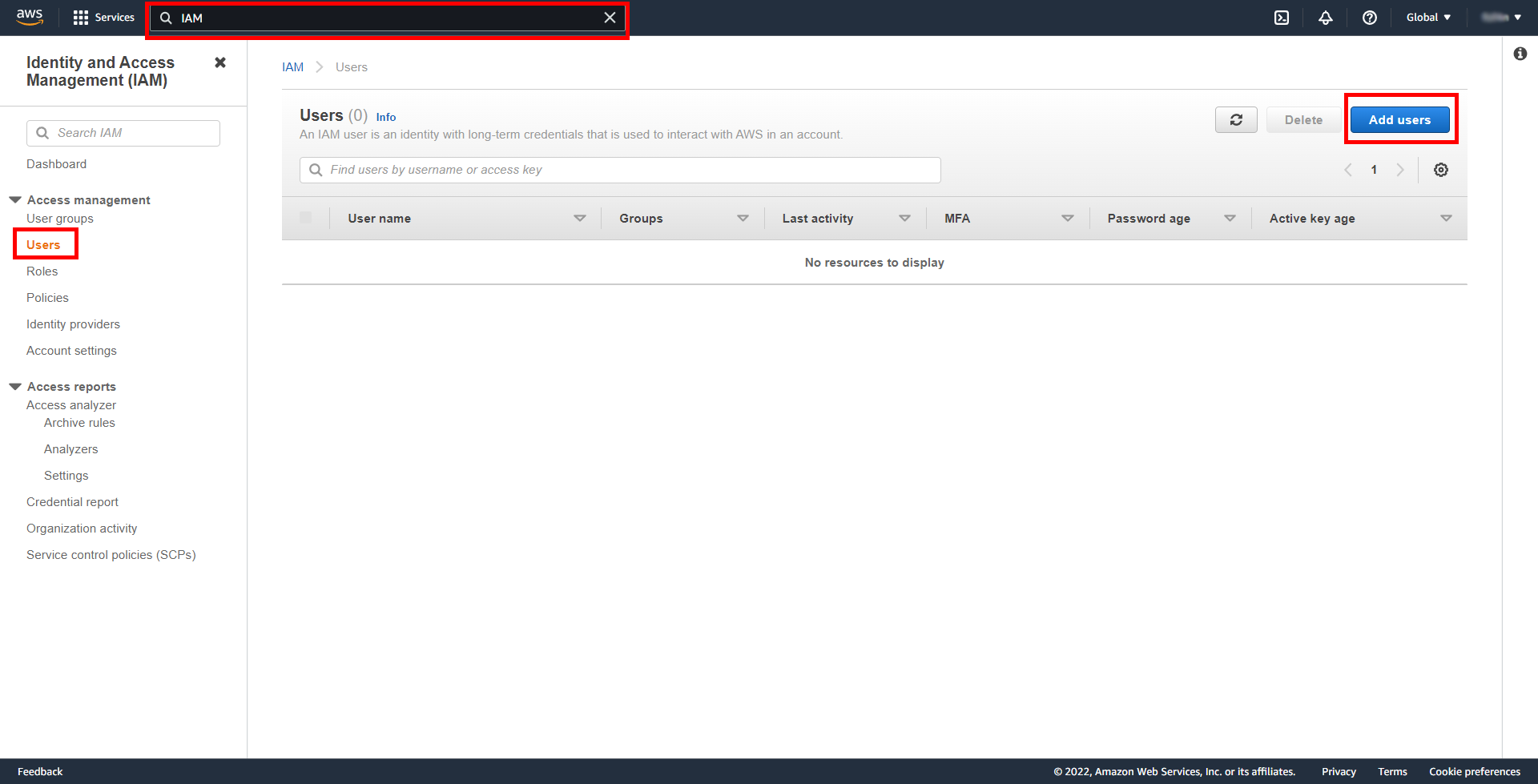
Enter a username.
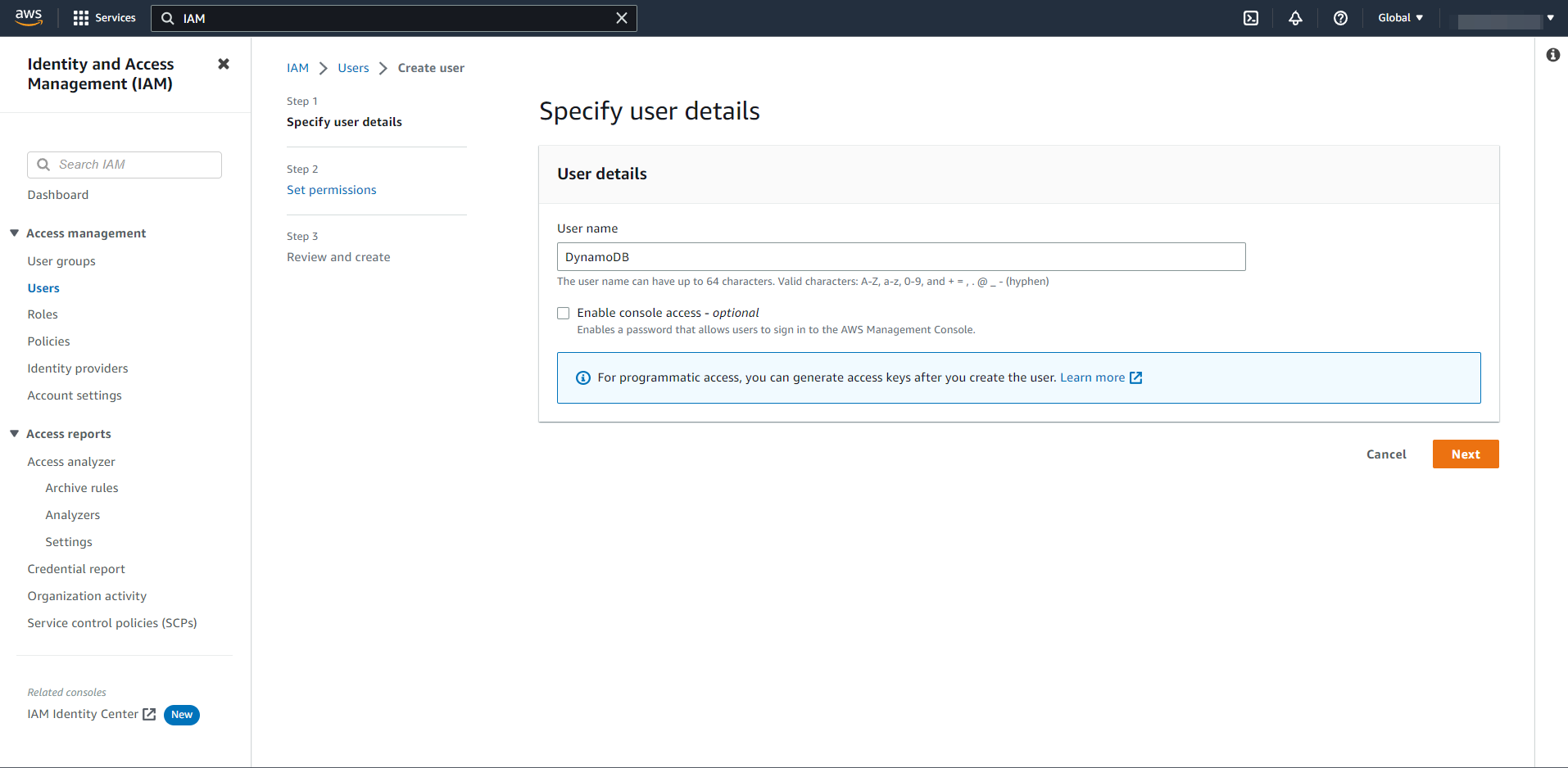
In the next step, click "Create group".

Specify the name of the group and in the search find "AmazonDynamoDBFullAccess", then tick these rights and click "Create group".
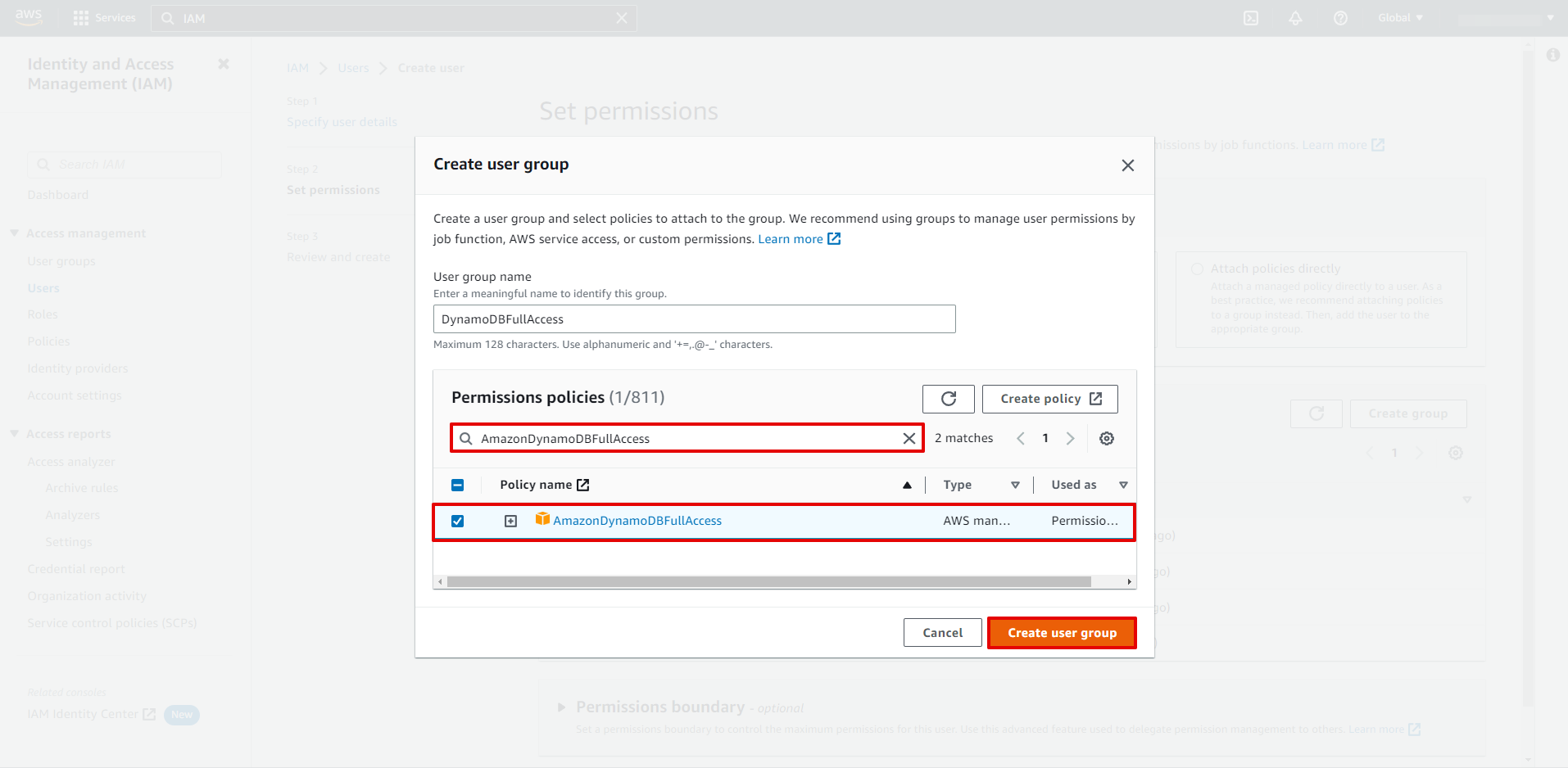
Click "Next" to move on to the next step.

At this stage, it is not necessary to specify the settings and you can click "Create user".
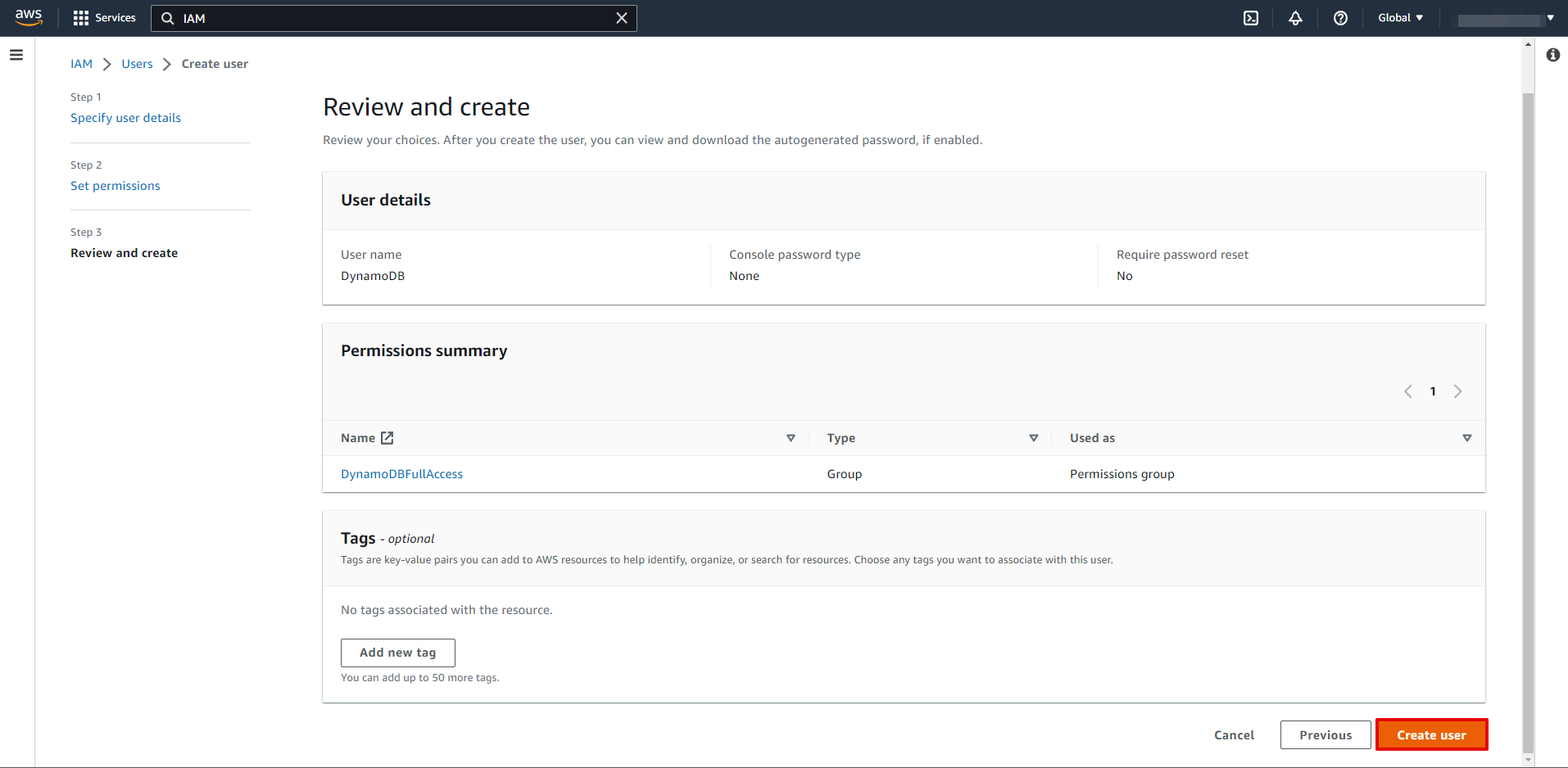
Select the created user.
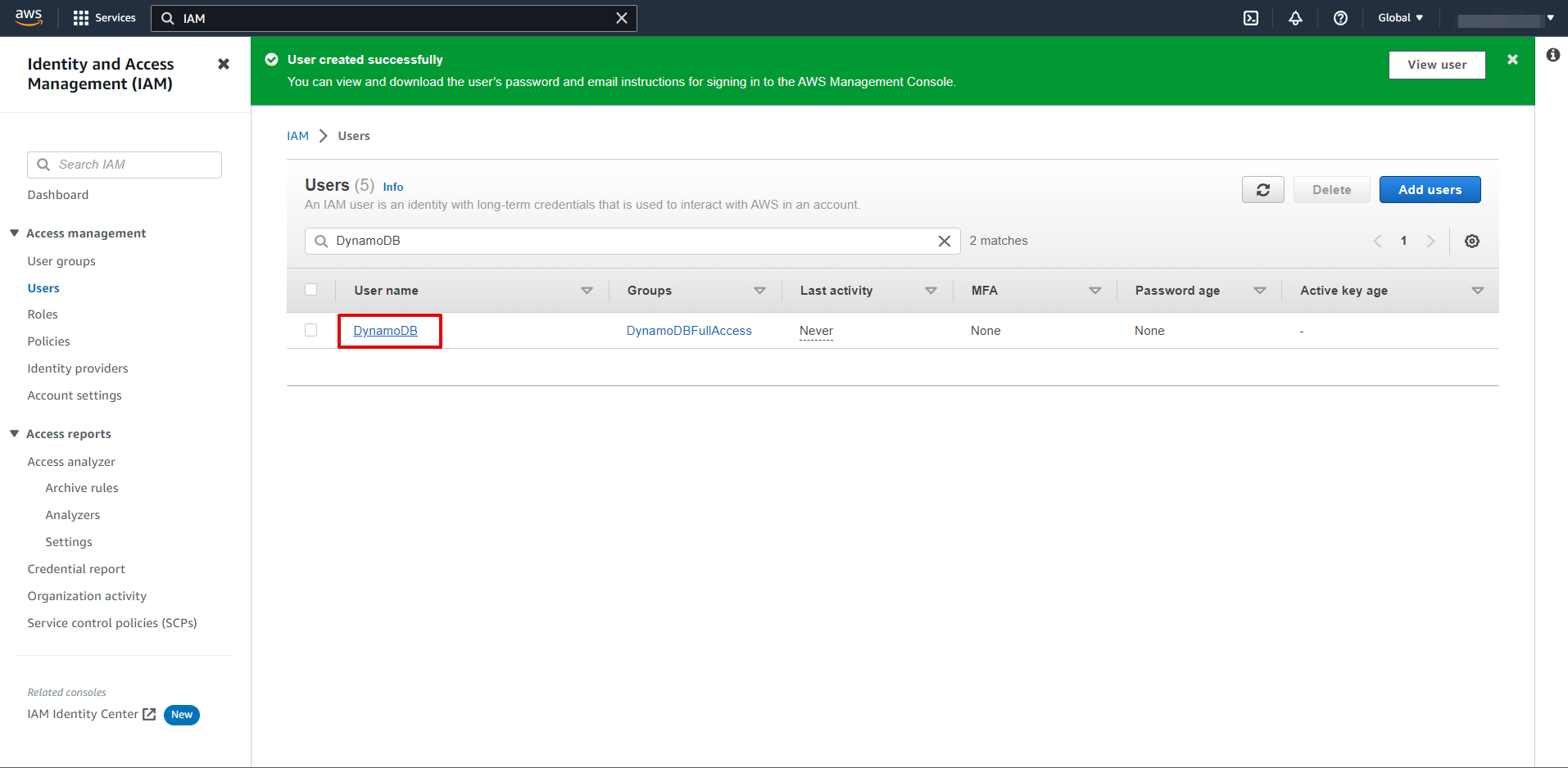
Go to "Security credentials" and click "Create access key".
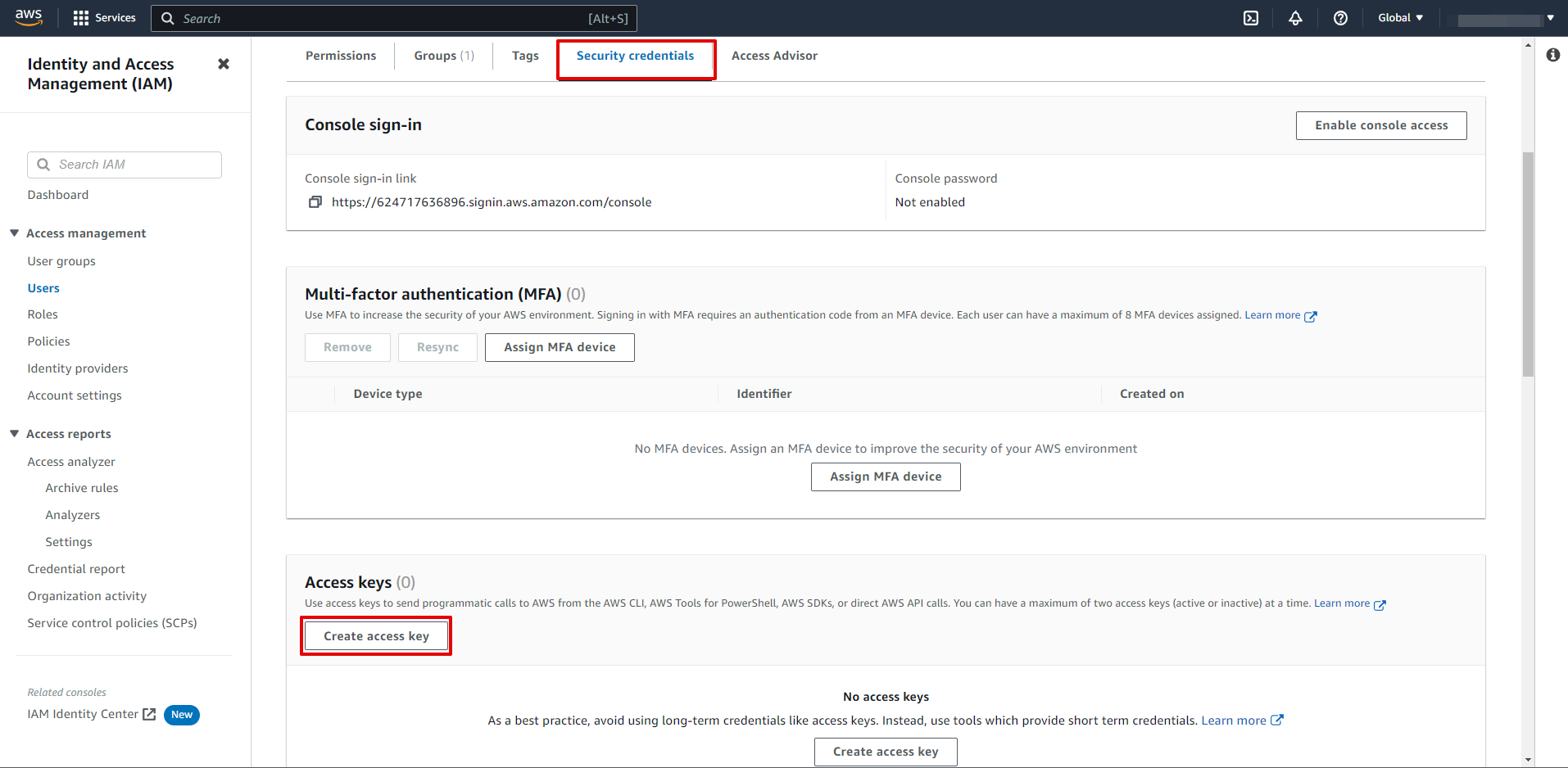
Select "Other".
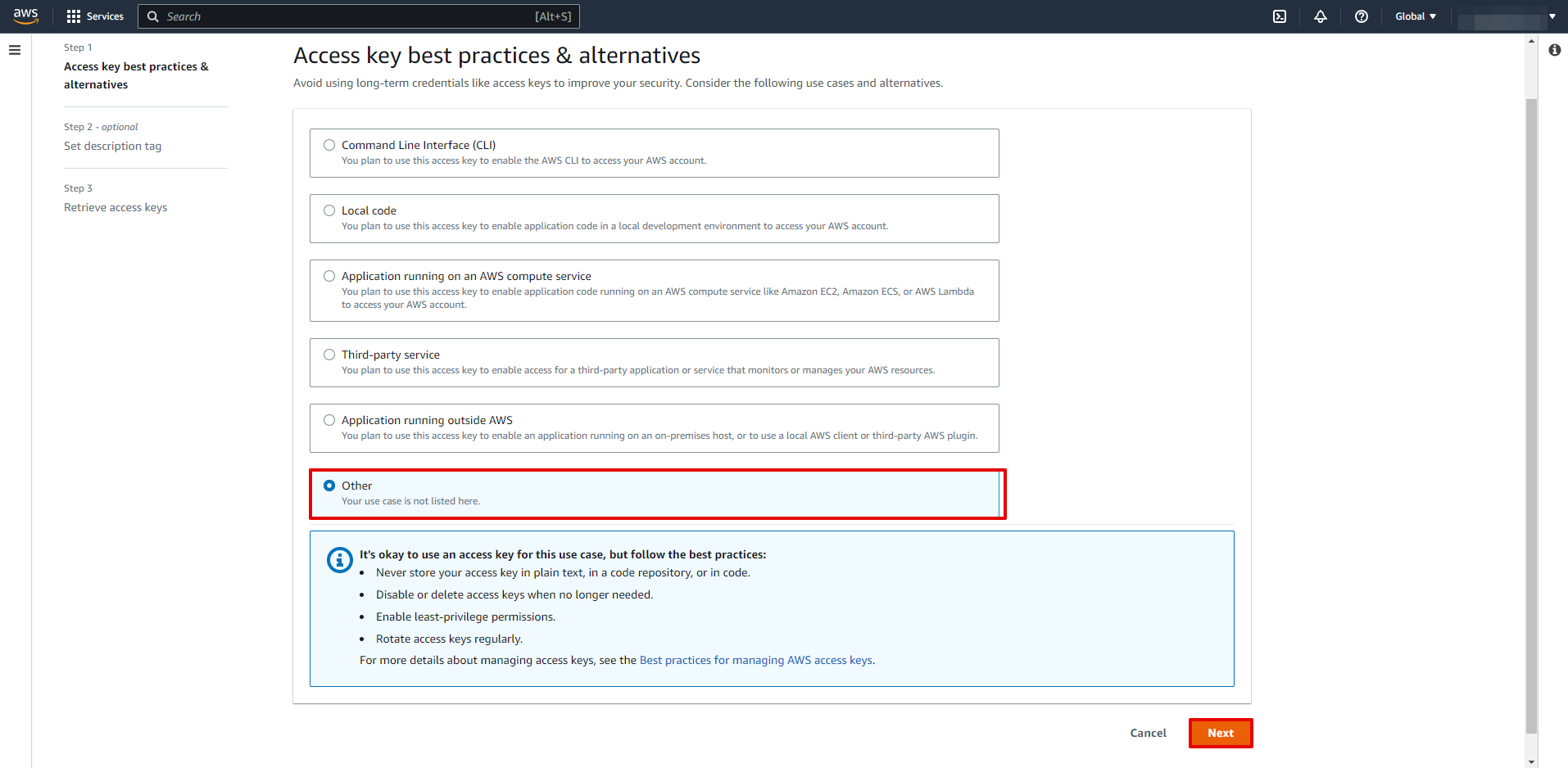
At this stage, it is not necessary to specify the settings and you can click "Create access key".
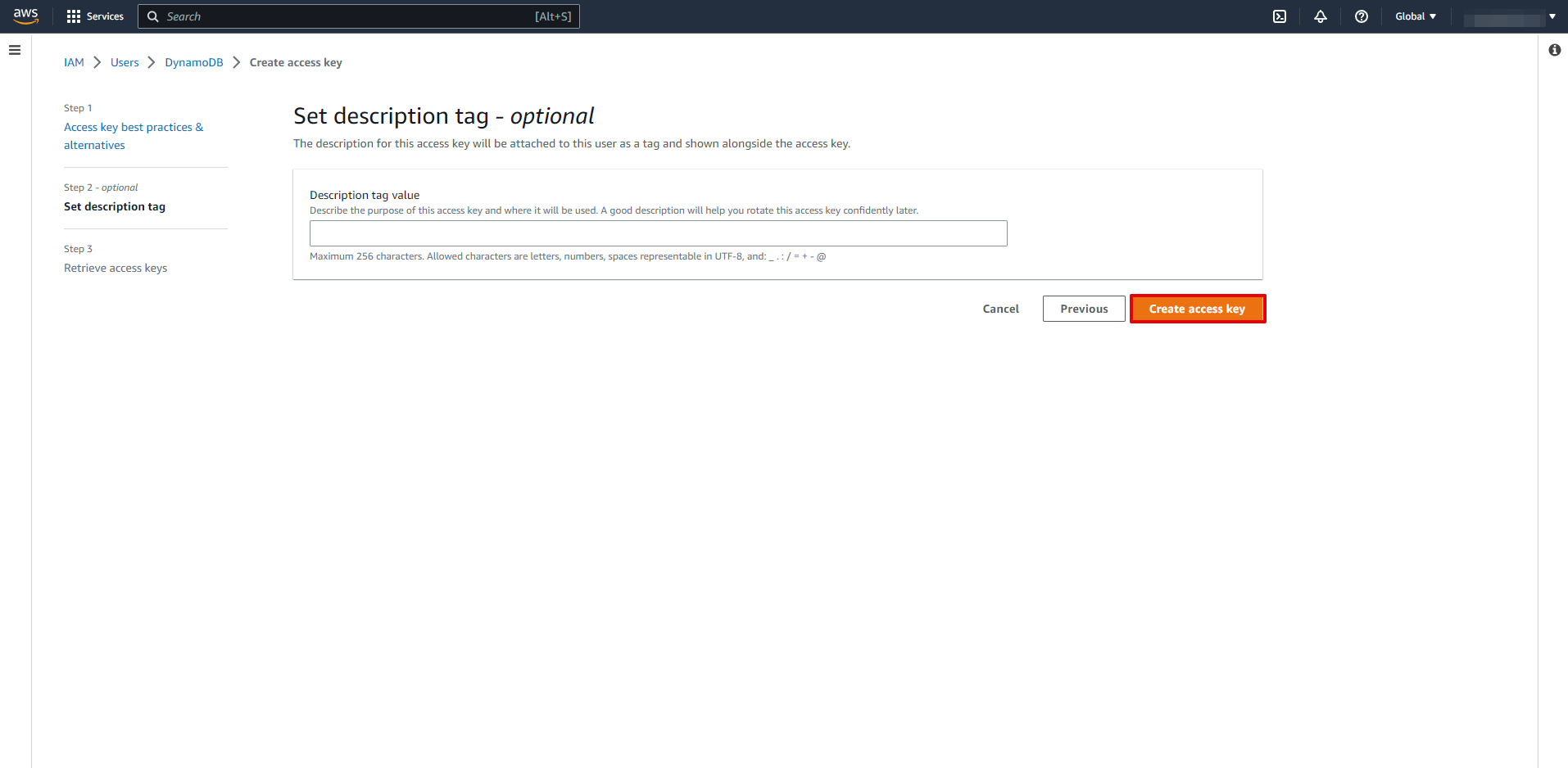
Copy "Access key ID" and "Secret access key" and paste them into the appropriate fields on our website.
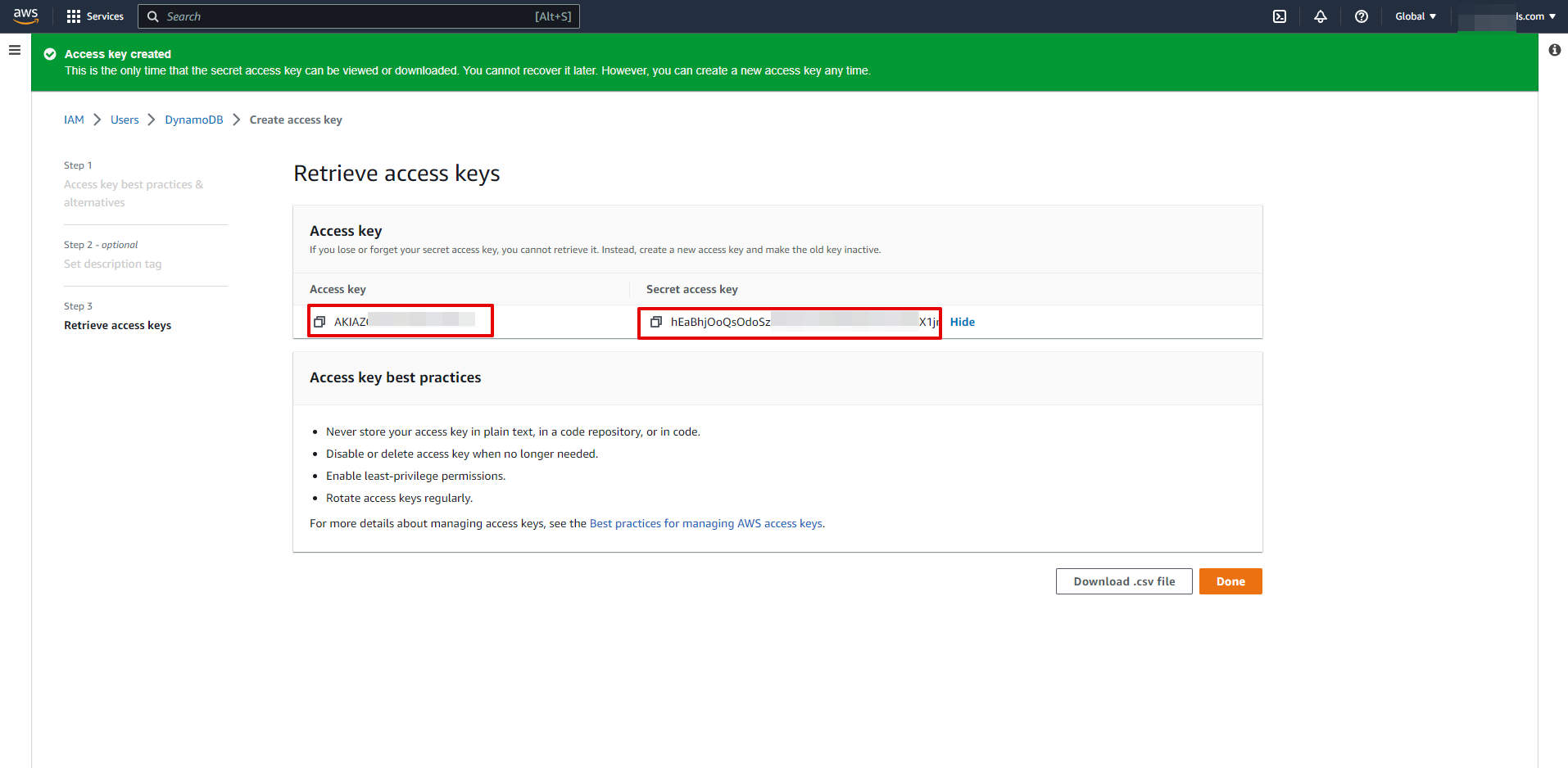
When the connected account is displayed in the "active accounts" list, select it for further work.
Attention! If your account is in the "inactive accounts" list, check your access to this login!

Go to the Amazon DynamoDB service and click the "Create table" button.

Next, specify "Table name" and "Partition key", then click "Create table".
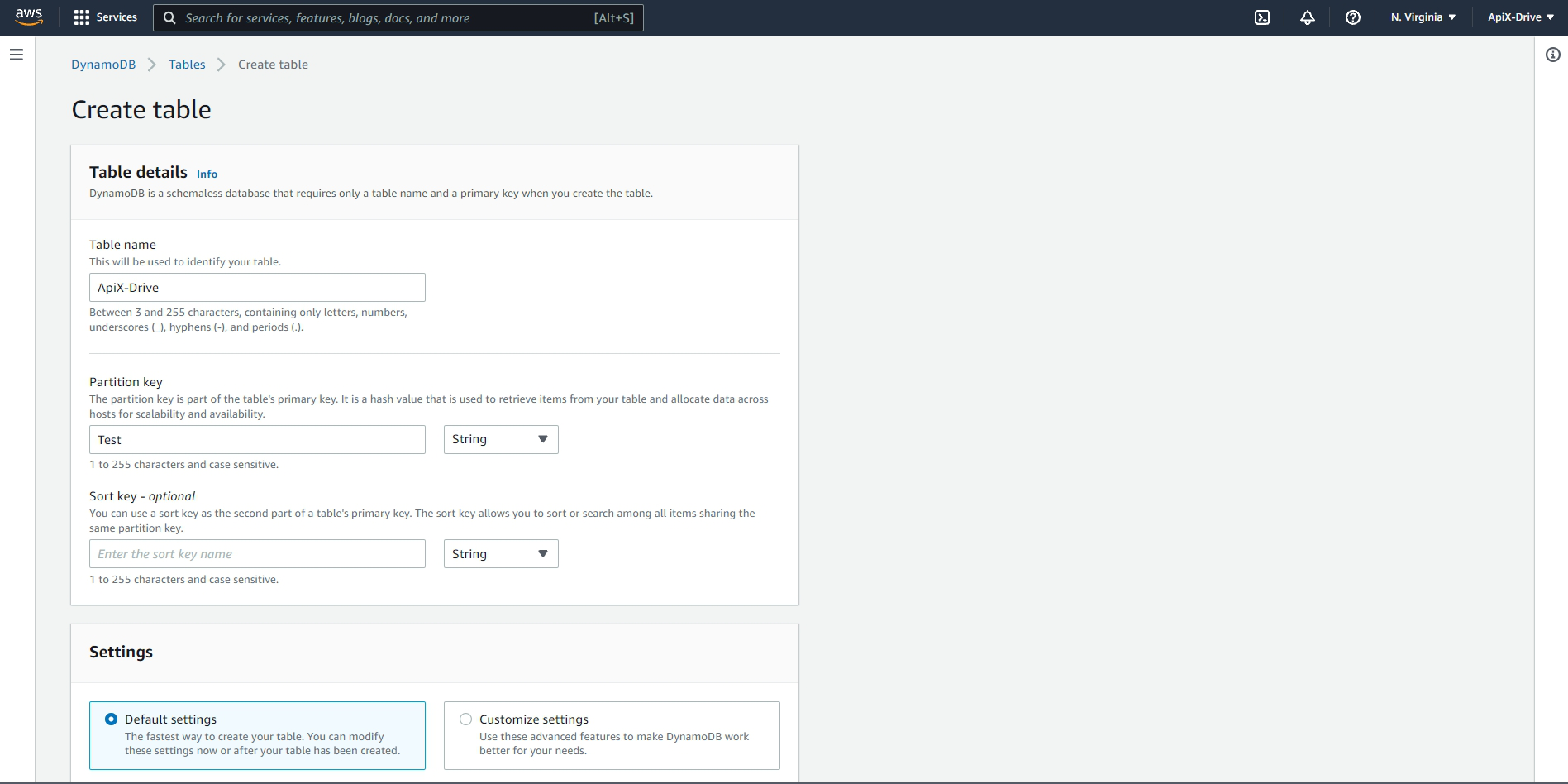
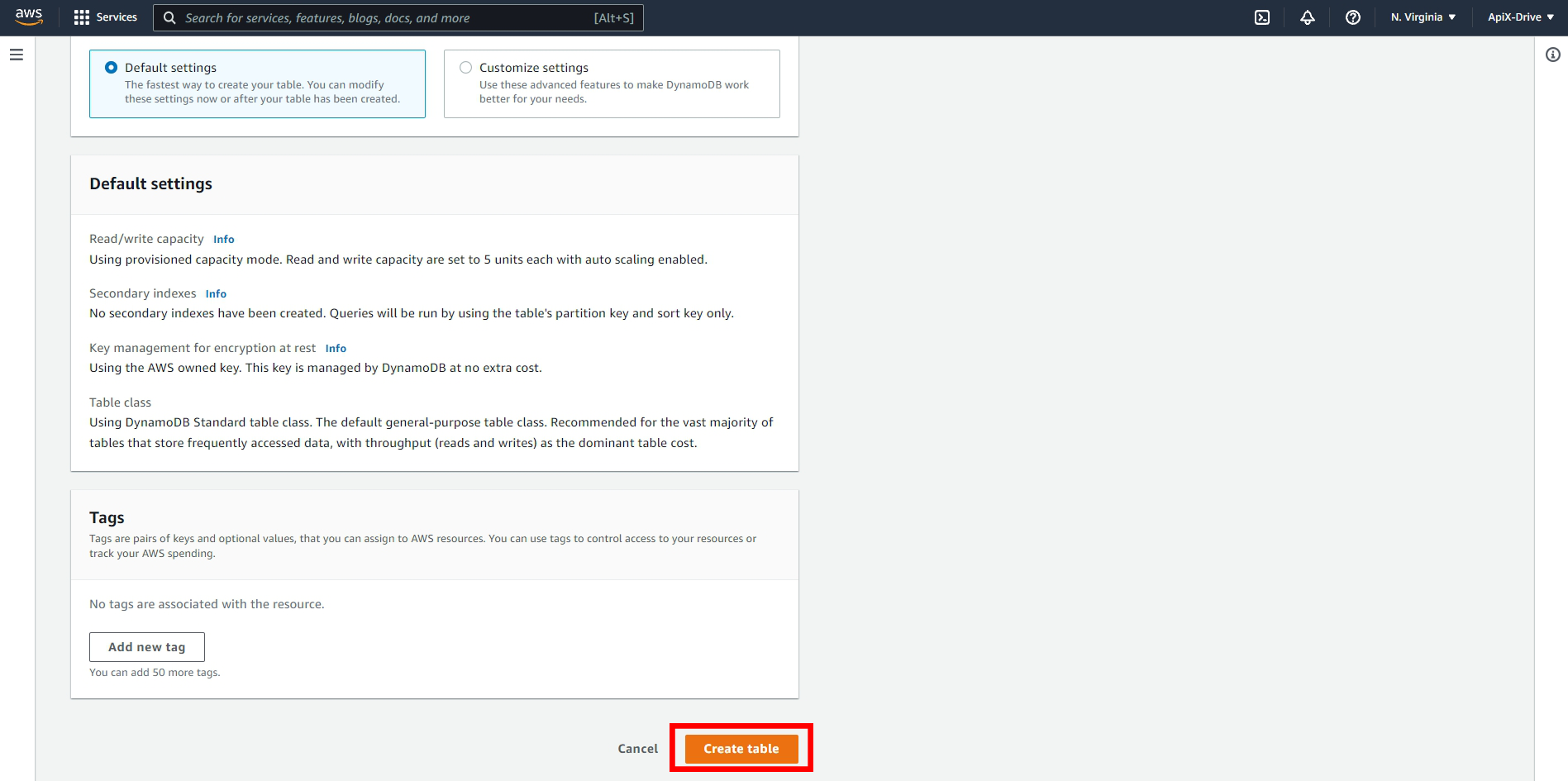
Next, go to the "Update setting" section, select your database, go to the "Indexes" section and click "Create index".
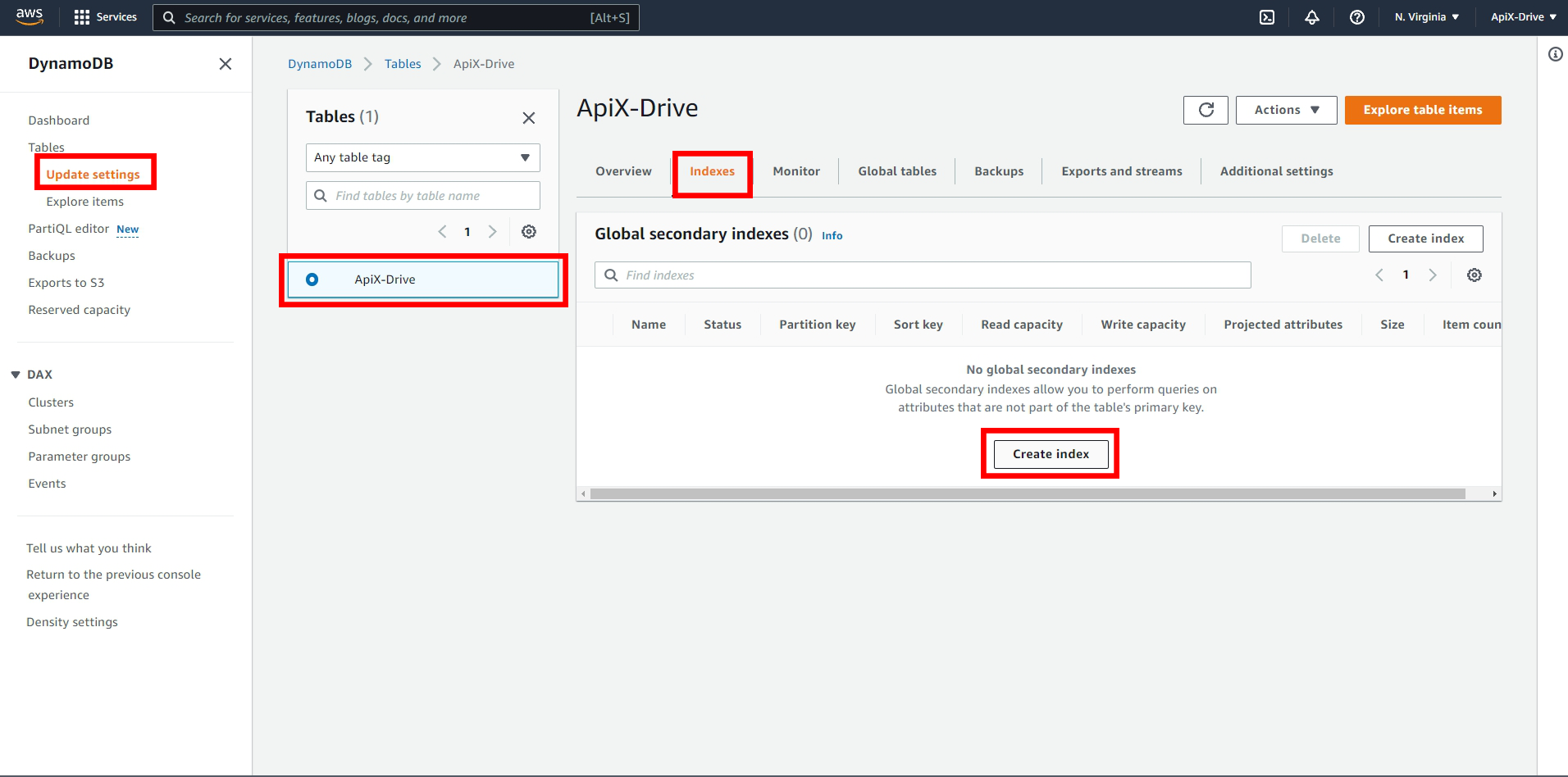
Specify the name of your index in the "Partition key" field and select "Number" in the "Data type" field. You can specify the rest of the settings as you wish. Once configured, click "Create index".
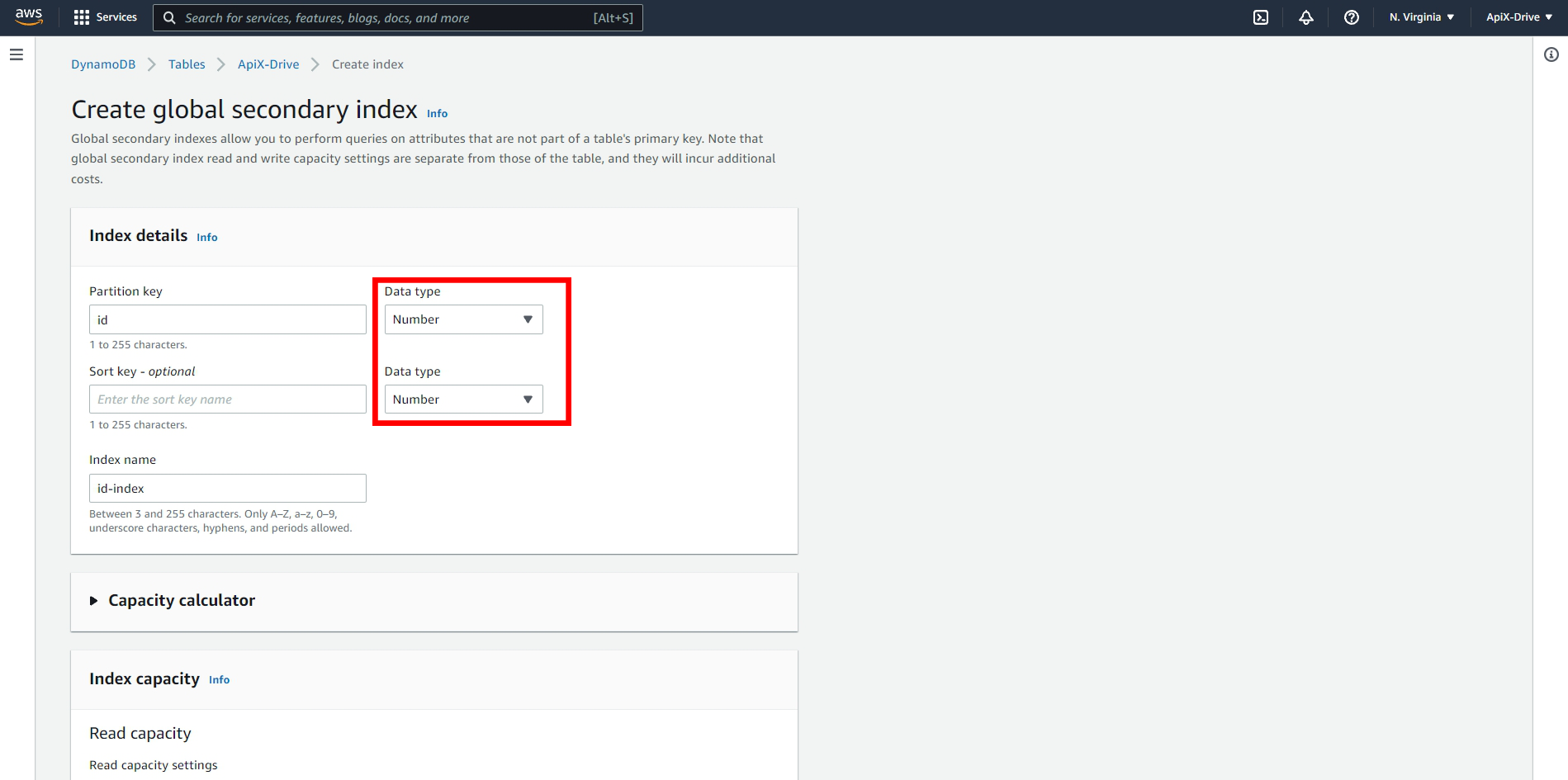
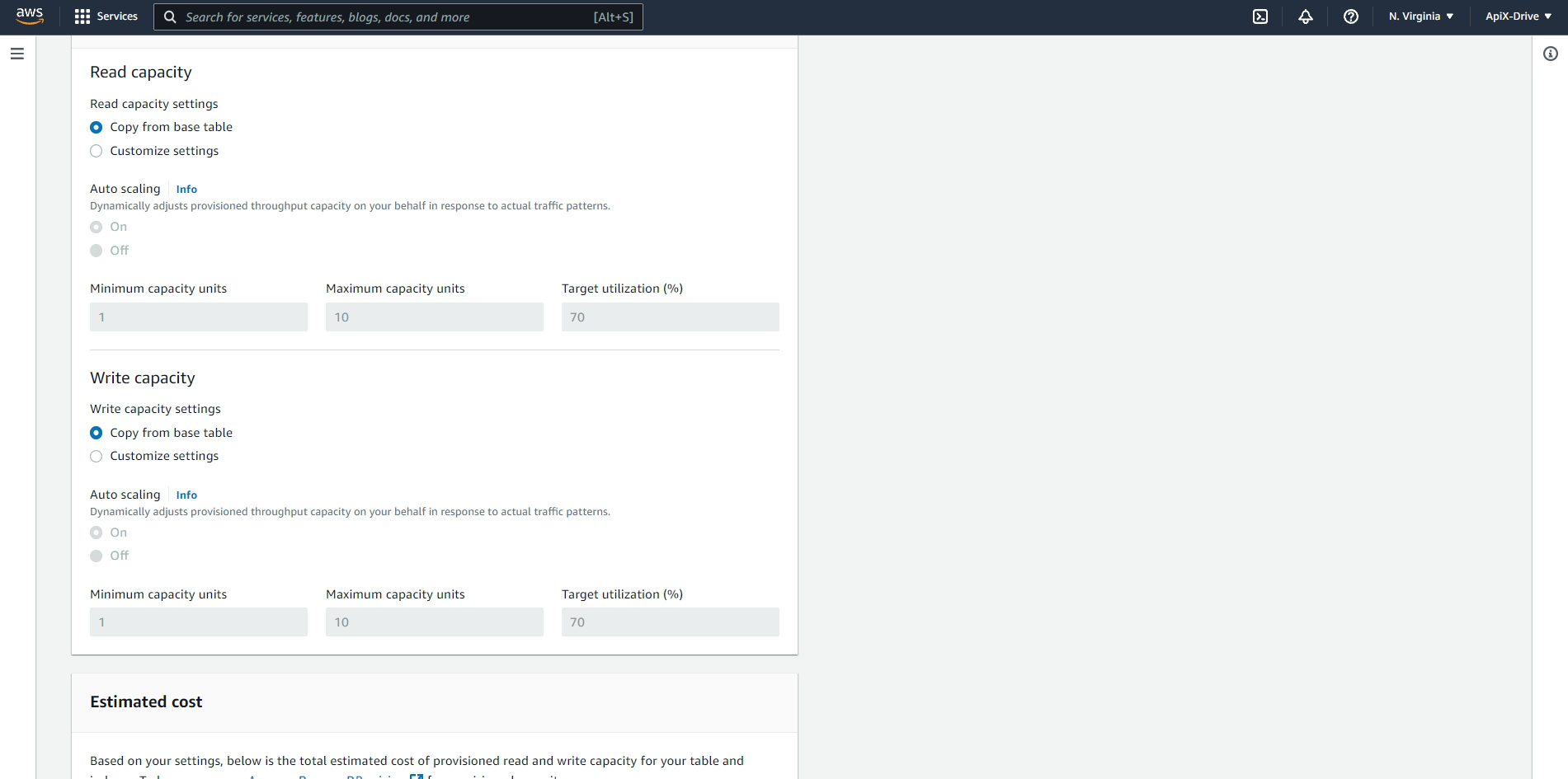

Wait until the index status is "Active".

To add data to your database, click on "Action" and select "Create item".

To add a new attribute, click on "Add new attribute". When all the data is entered, click "Create item".
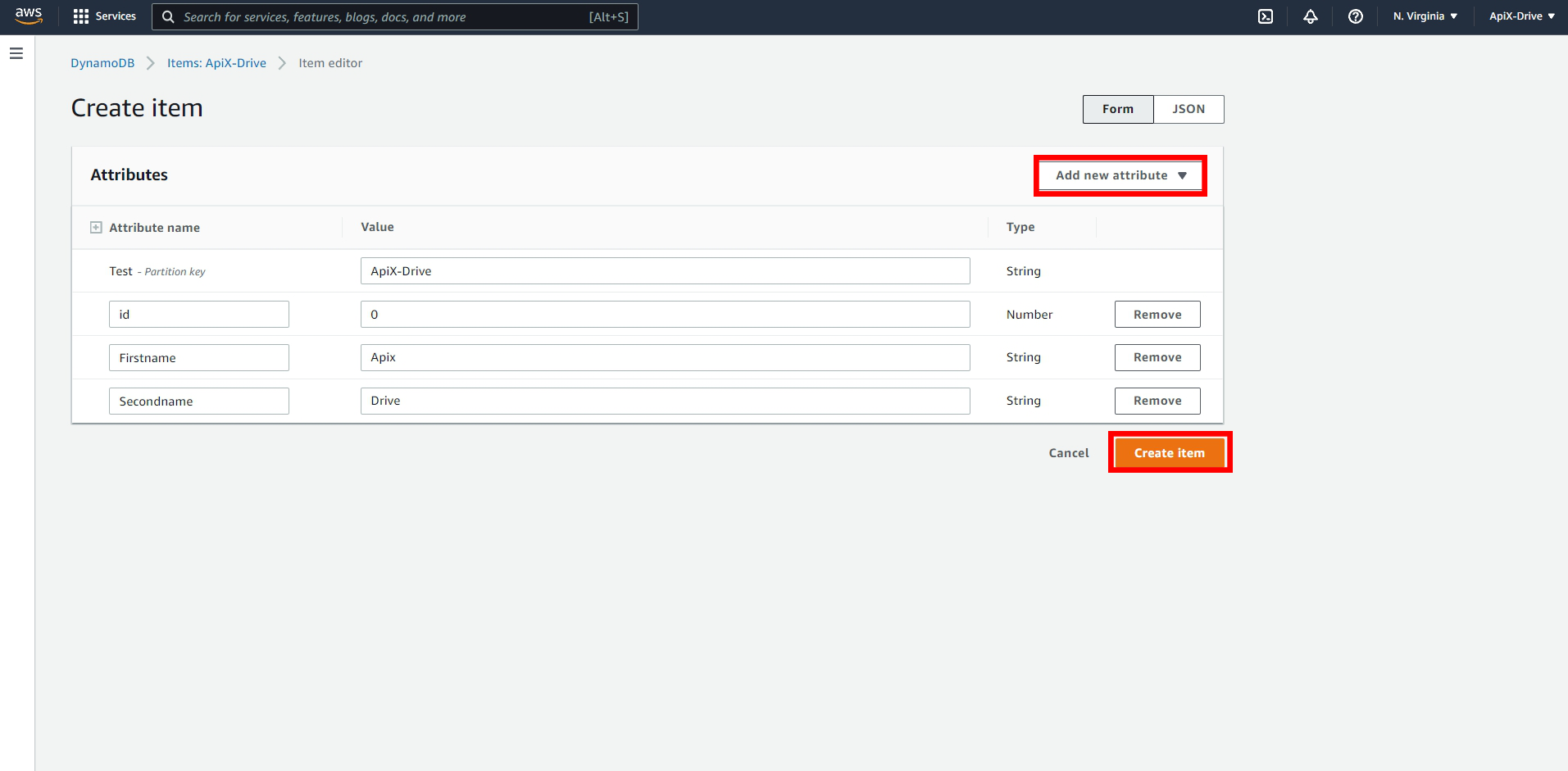
Now select the Table in which the row will be created.
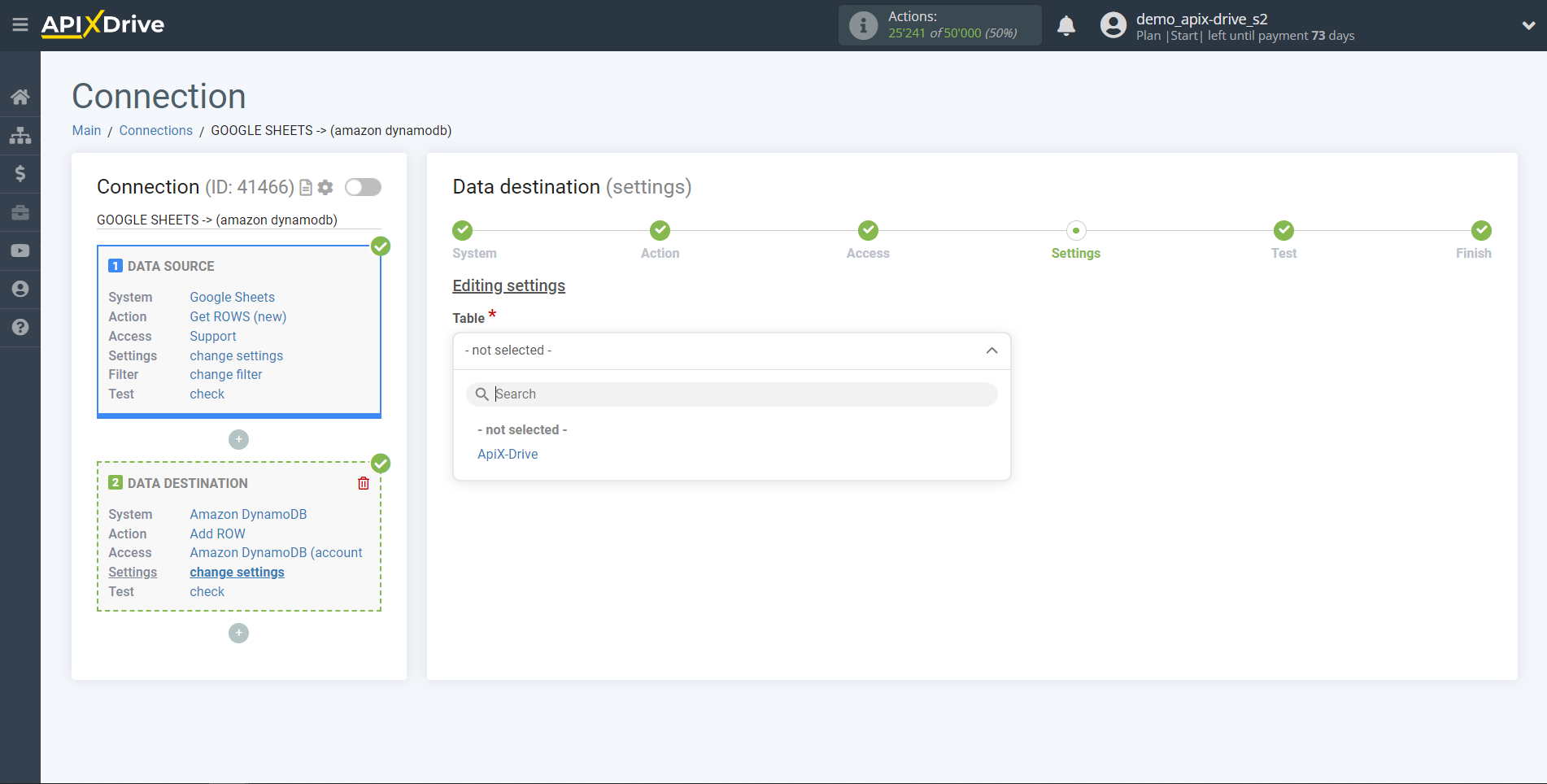
Now you need to assign variables from the Data Source block to the columns of the table you need.
To add a variable, click on the column field and select the desired variable from the drop-down list. Please note that you can use not only Data Source variables, but also manually entered data.
Click "Continue" when you're done with assigning fields.
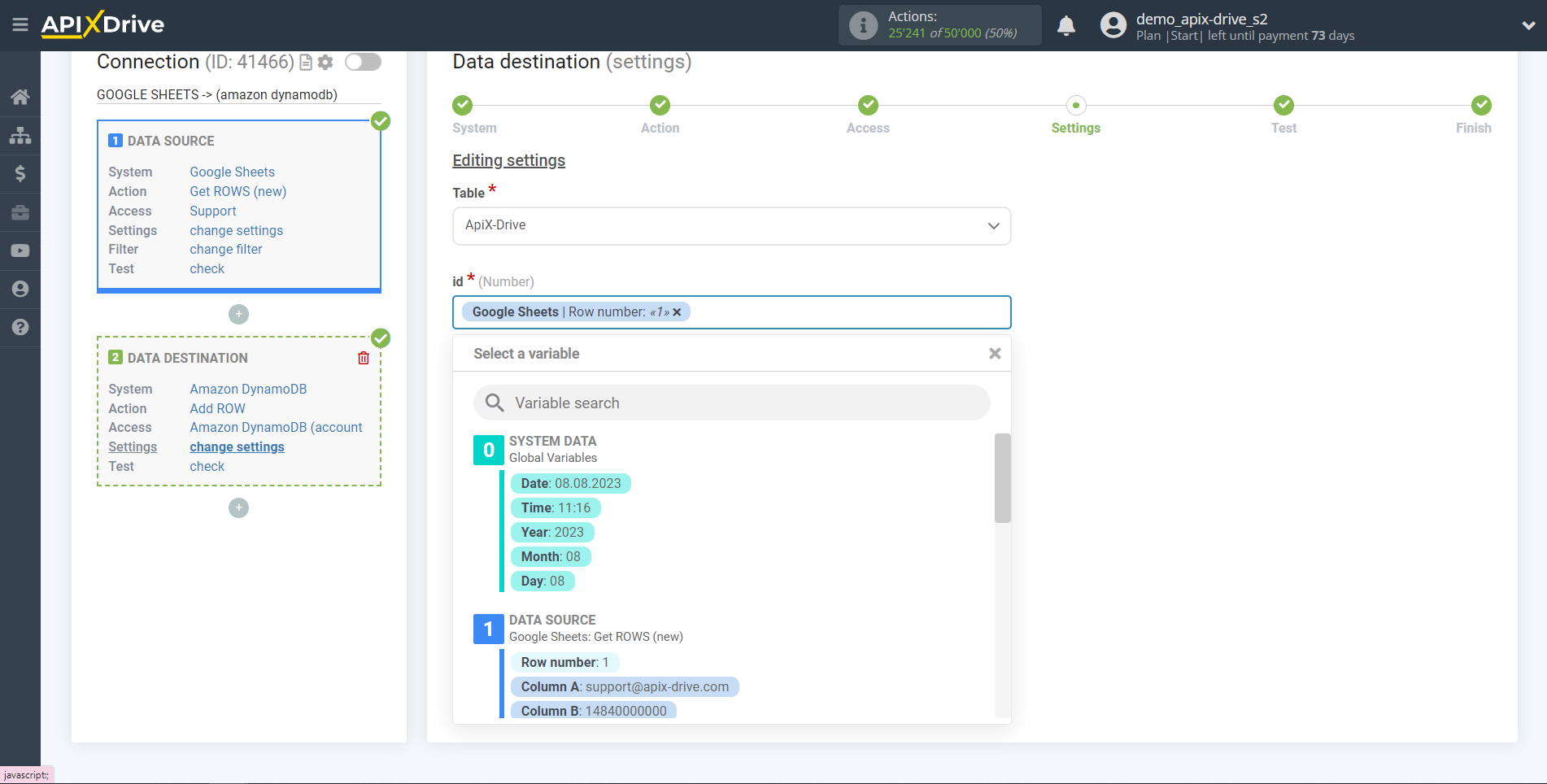

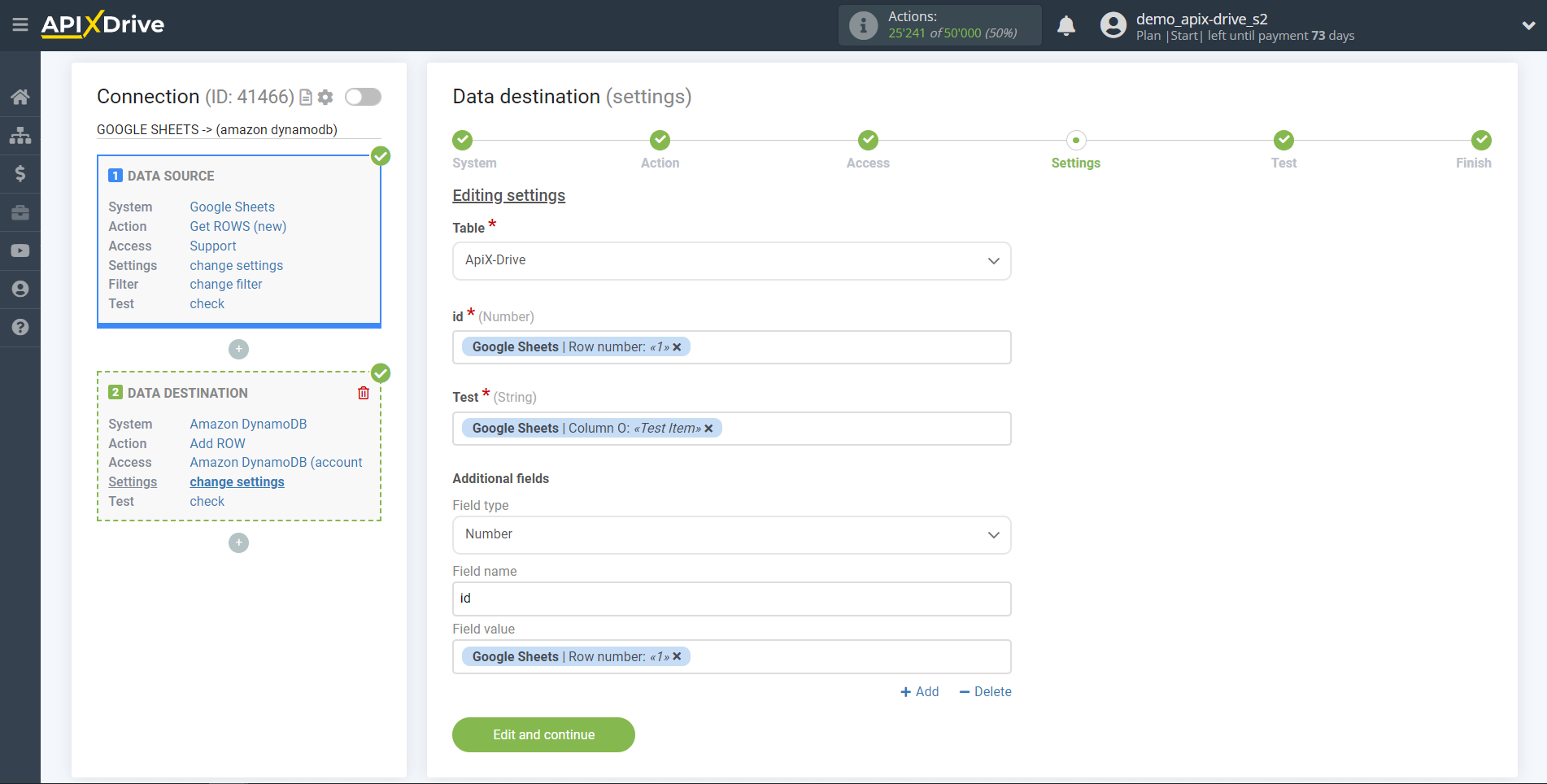
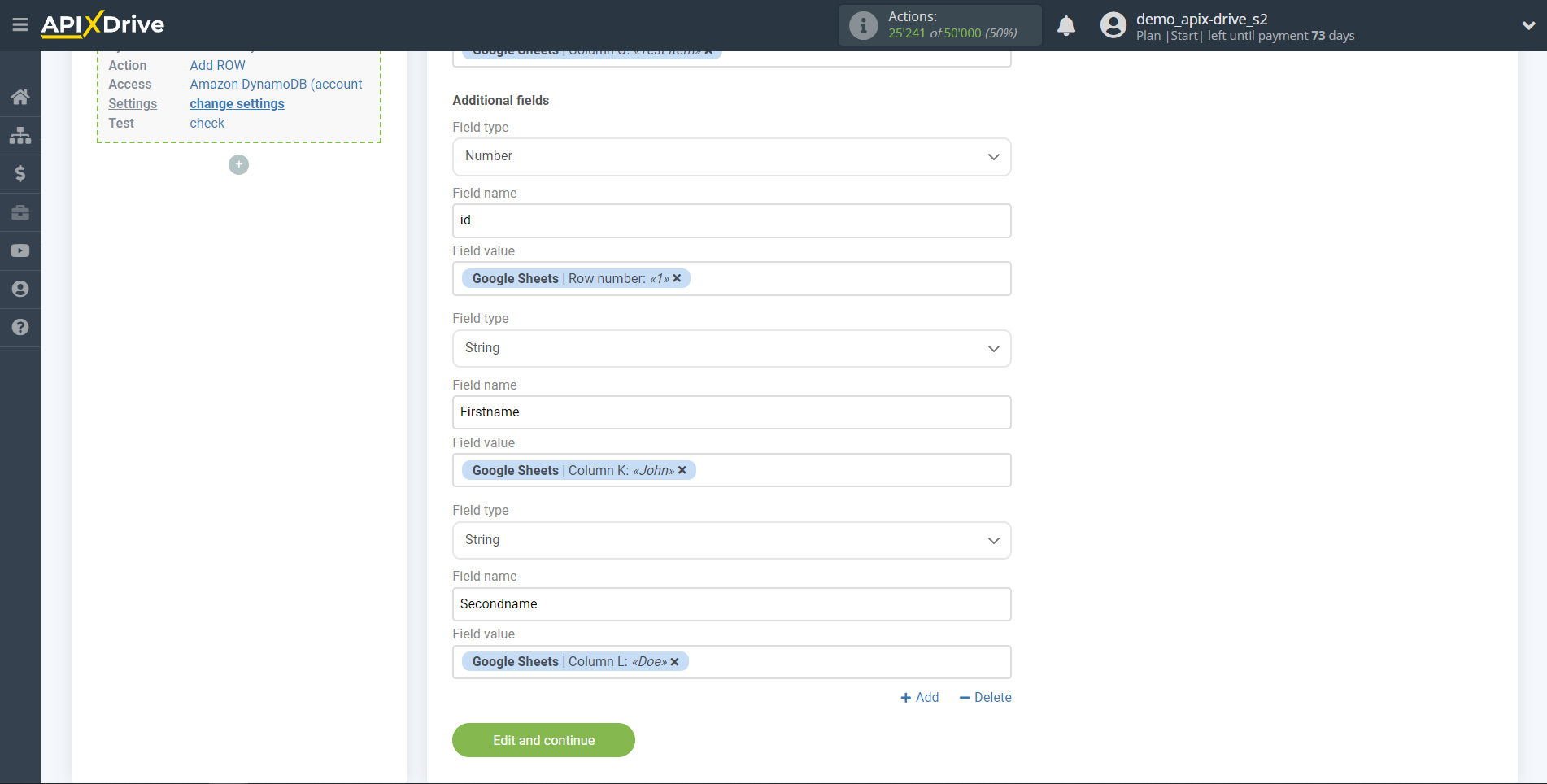
Now you see the test data to send to Amazon DynamoDB.
Click "Submit test data to Amazon DynamoDB" and test the base and table in Amazon DynamoDB.
If everything suits you, click "Next" for further configuration.

This completes the Data Destination setup!
Now you can start choosing the update interval and enabling auto-update.
To do this, click "Enable auto-update".
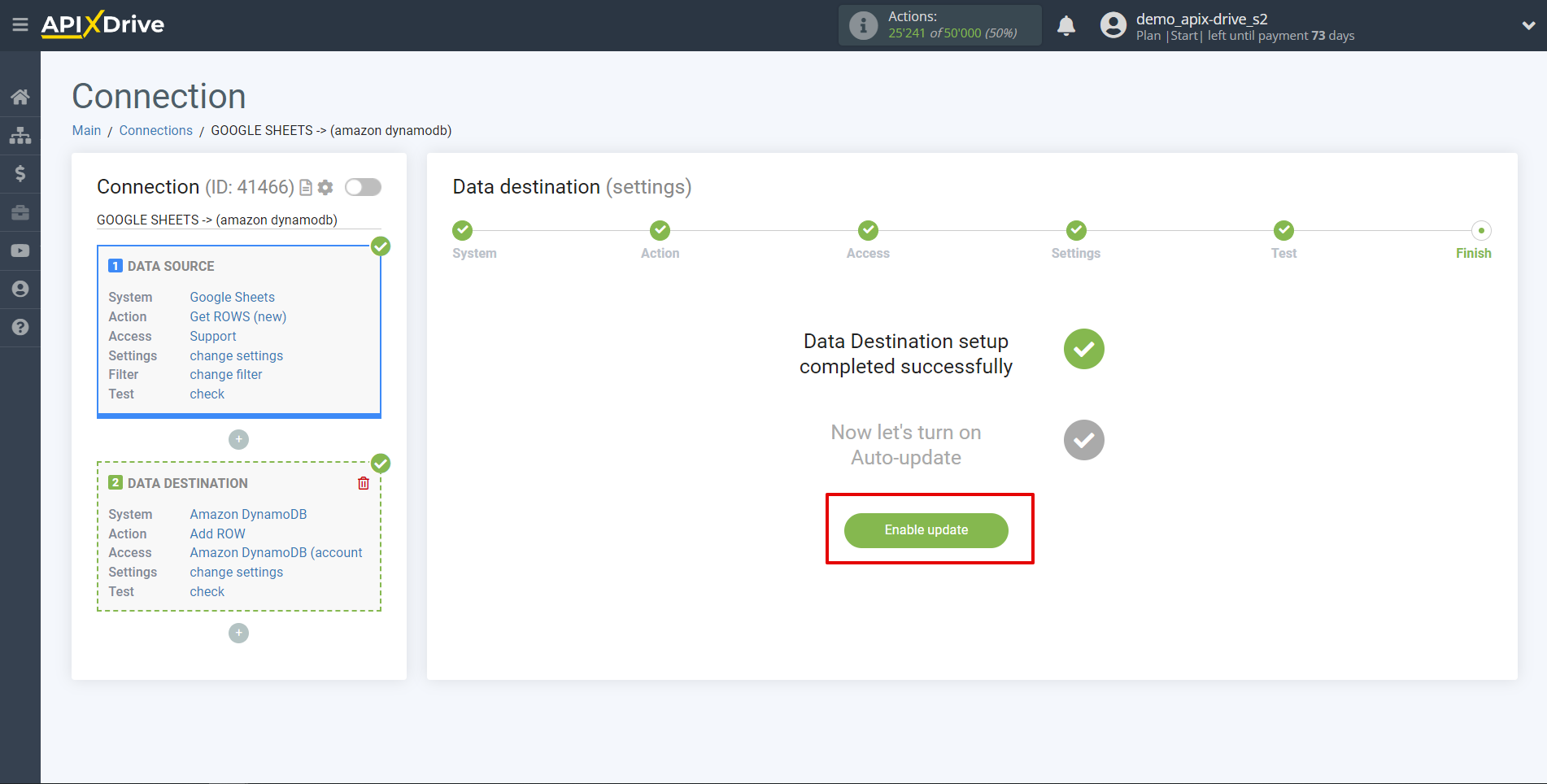
To enable auto-update, switch the slider to the position as shown in the picture.
To force the connection, click on the arrow icon. On the main screen, click on the gear icon to select the required update interval or set up scheduled launch. To start the connection by time, select scheduled start and specify the desired time for the connection update to fire, or add several options at once when you need the connection to fire.
Attention! In order for the scheduled run to work at the specified time, the interval between the current time and the specified time must be more than 5 minutes. For example, you select the time 12:10 and the current time is 12:08 - in this case, the automatic update of the connection will occur at 12:10 the next day. If you select the time 12:20 and the current time is 12:13 - the auto-update of the connection will work today and then every day at 12:20.
To make the current connection transmit data only after another connection, check the box "Update connection only after start other connection" and specify the connection after which the current connection will be started.
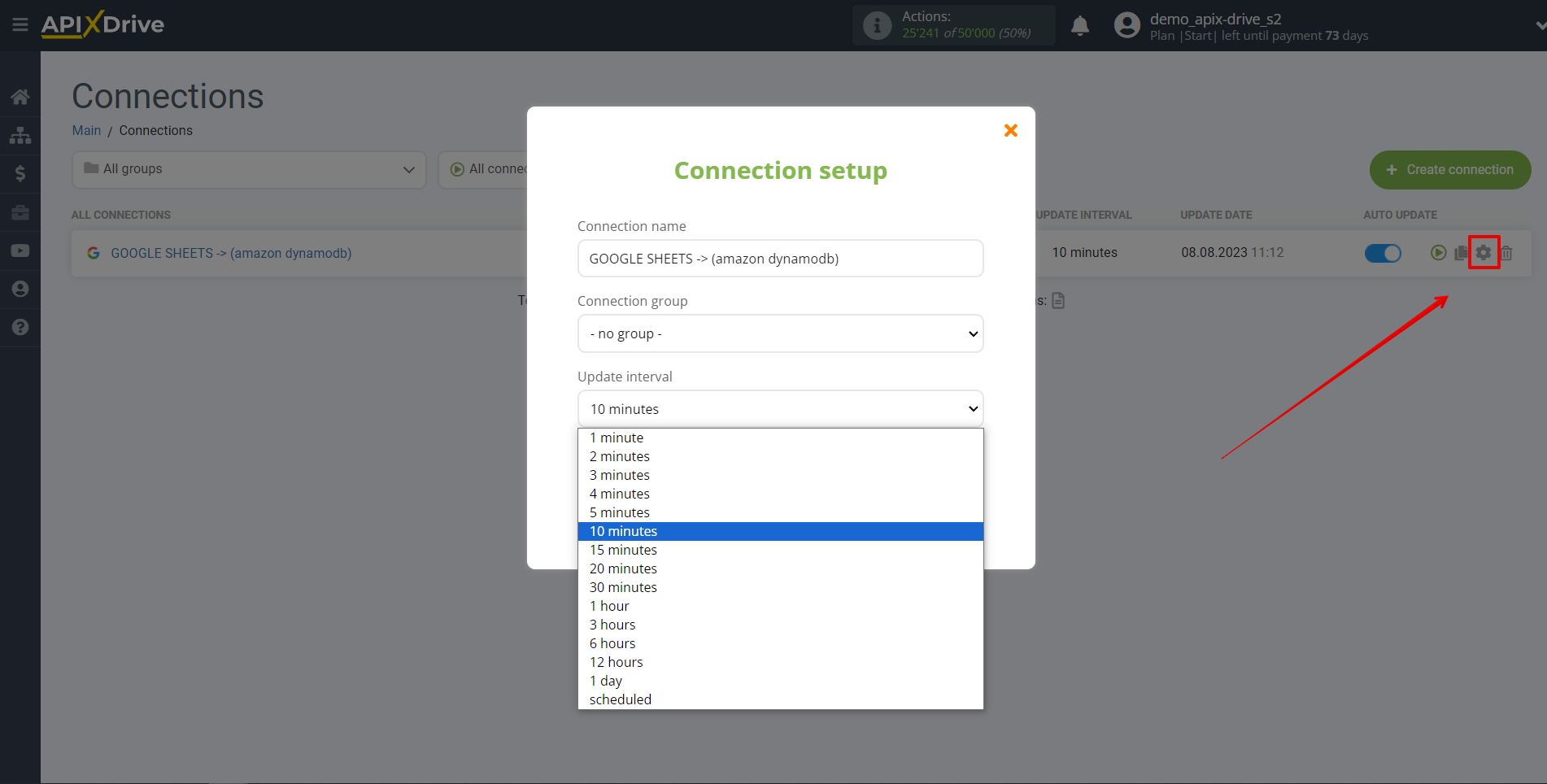
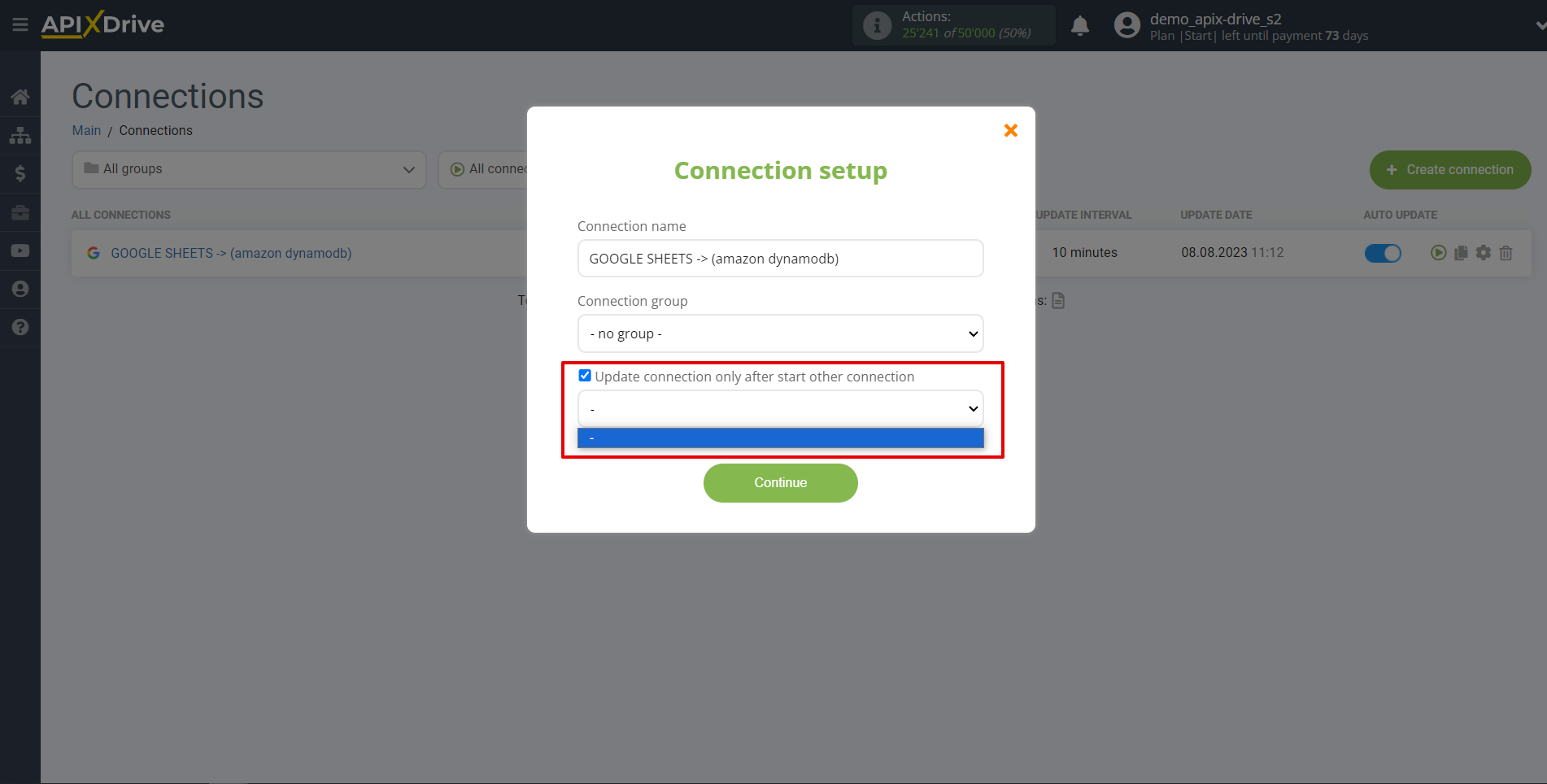
To enable auto-update, switch the slider to the position as shown in the picture.
To force the connection, click on the arrow icon.
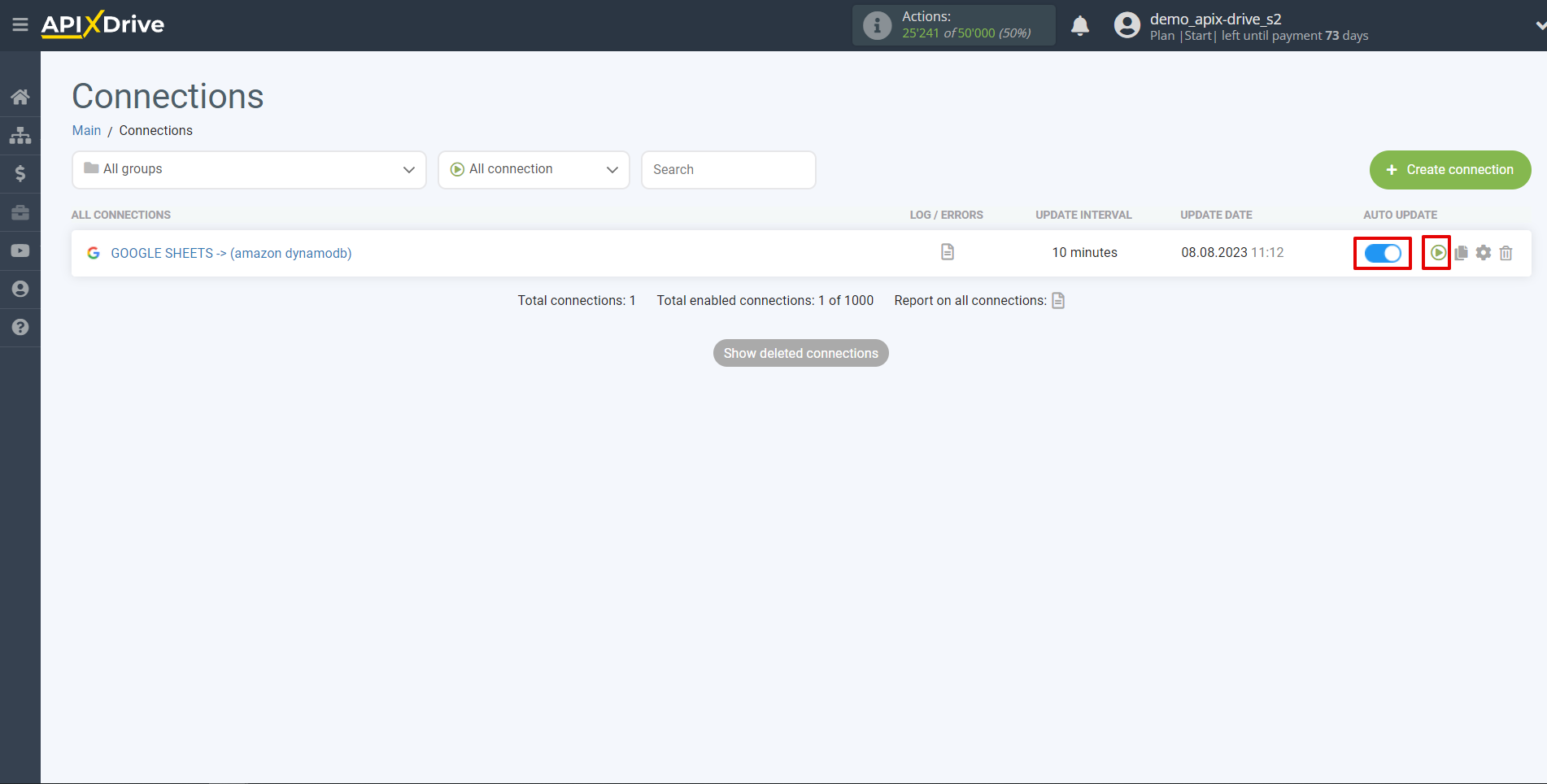
This completes setting up Amazon DynamoDB as a Data Destination! See how easy it is!?
Now don't worry, ApiX-Drive will do everything on its own!